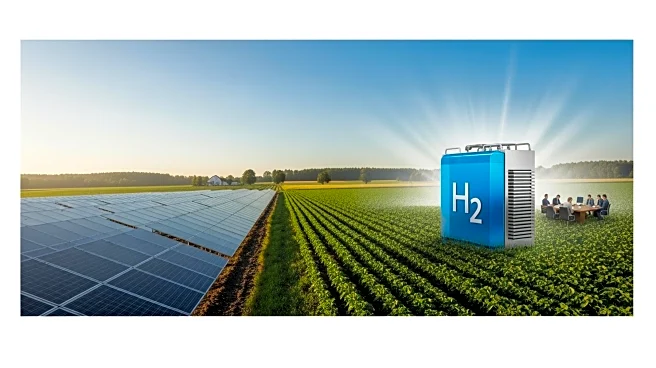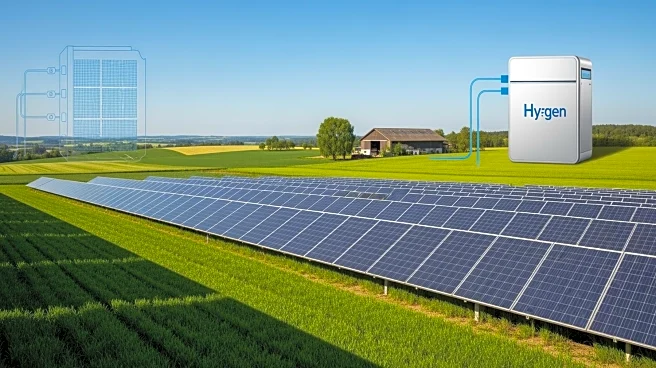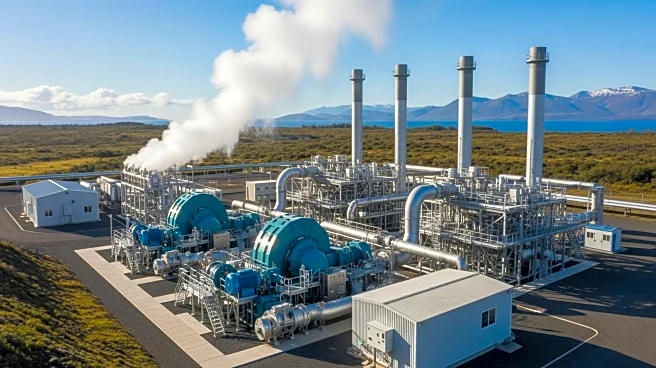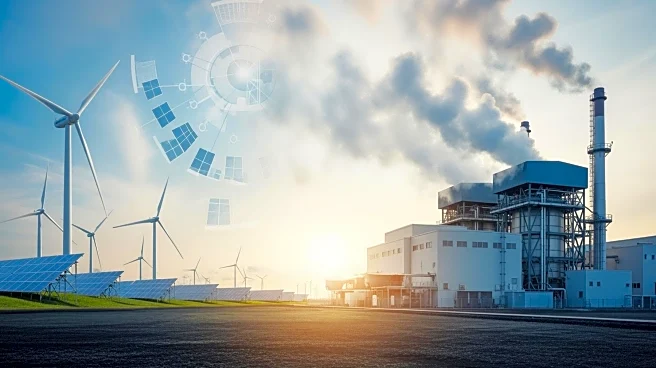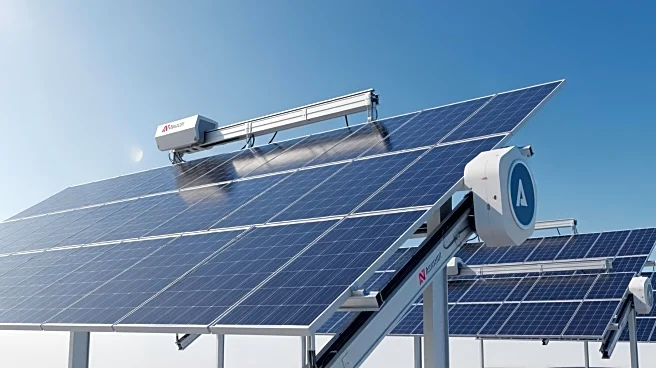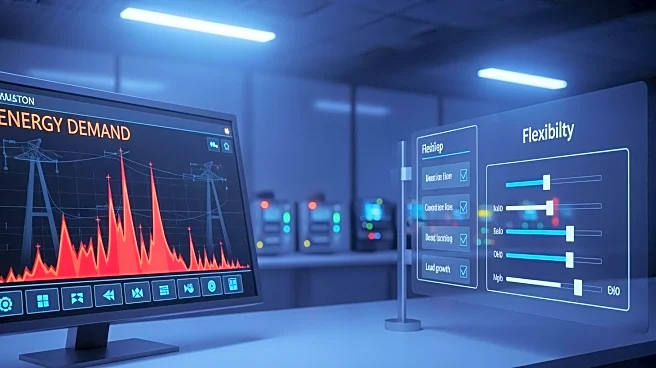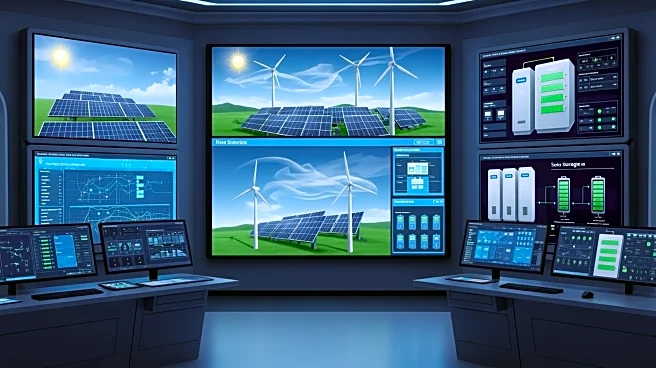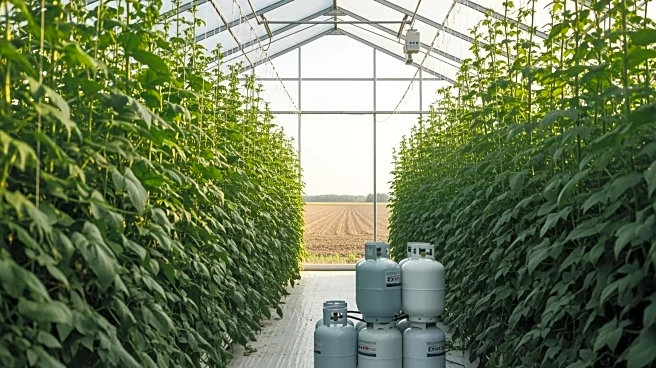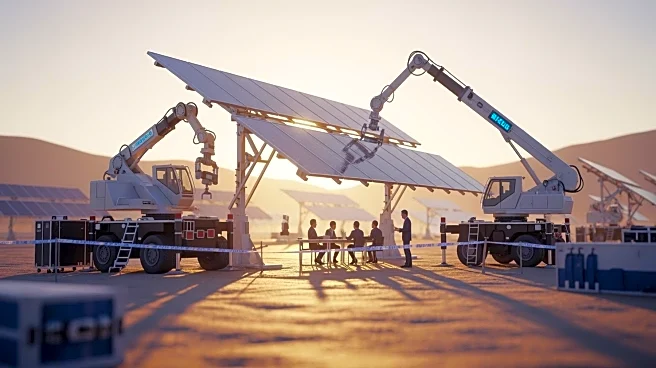What's Happening?
The agrivoltaic industry, which combines agriculture with solar power generation, is exploring the integration of green hydrogen production as a sustainable energy solution for farmers. Researchers at the University
of Exeter have conducted a financial analysis of a simulated agrivoltaic and green hydrogen system, powered by a 1-gigawatt solar power plant. This system aims to produce hydrogen through water electrolysis, offering farmers an off-grid fuel and energy storage option. Despite the high costs associated with green hydrogen, government policies continue to support its development, particularly for industrial use and hydrogen fuel cell electric vehicles (FCEVs). The study highlights the potential benefits of agrivoltaics in supporting food systems while providing green hydrogen fuel for FCEV stations in various countries, including the U.S.
Why It's Important?
The integration of green hydrogen with agrivoltaics represents a significant step towards sustainable energy solutions in agriculture. By enabling farmers to produce their own hydrogen fuel, this approach could enhance energy self-sufficiency and provide additional revenue streams. The shift to green hydrogen is crucial for reducing reliance on fossil fuels and supporting decarbonization efforts. As demand for hydrogen grows, particularly in industrial sectors, this innovation could play a key role in meeting energy needs while mitigating environmental impacts. The U.S. Department of Energy's support for green hydrogen reflects its potential to transform energy production and consumption in agriculture and beyond.
What's Next?
The development of agrivoltaic systems with integrated green hydrogen production is expected to continue, driven by government policies and industrial demand. In the U.S., federal support for green hydrogen has been bolstered by initiatives like the $7 billion hydrogen diversification effort. However, political changes could impact the pace of these developments. As the demand for hydrogen persists, particularly among industrial users, further advancements in technology and infrastructure are anticipated. The ongoing exploration of co-locating renewable energy sources with hydrogen production facilities will likely expand, offering new opportunities for sustainable energy solutions.
Beyond the Headlines
The integration of green hydrogen with agrivoltaics could have broader implications for land use and food production. By optimizing land equivalent ratios (LER), farmers can balance energy generation with crop yields, potentially enhancing food security. This dual-use approach may also contribute to rural economic development by providing new income streams and reducing energy costs. As the technology matures, ethical considerations around land use and resource allocation will become increasingly important, influencing policy decisions and industry practices.
